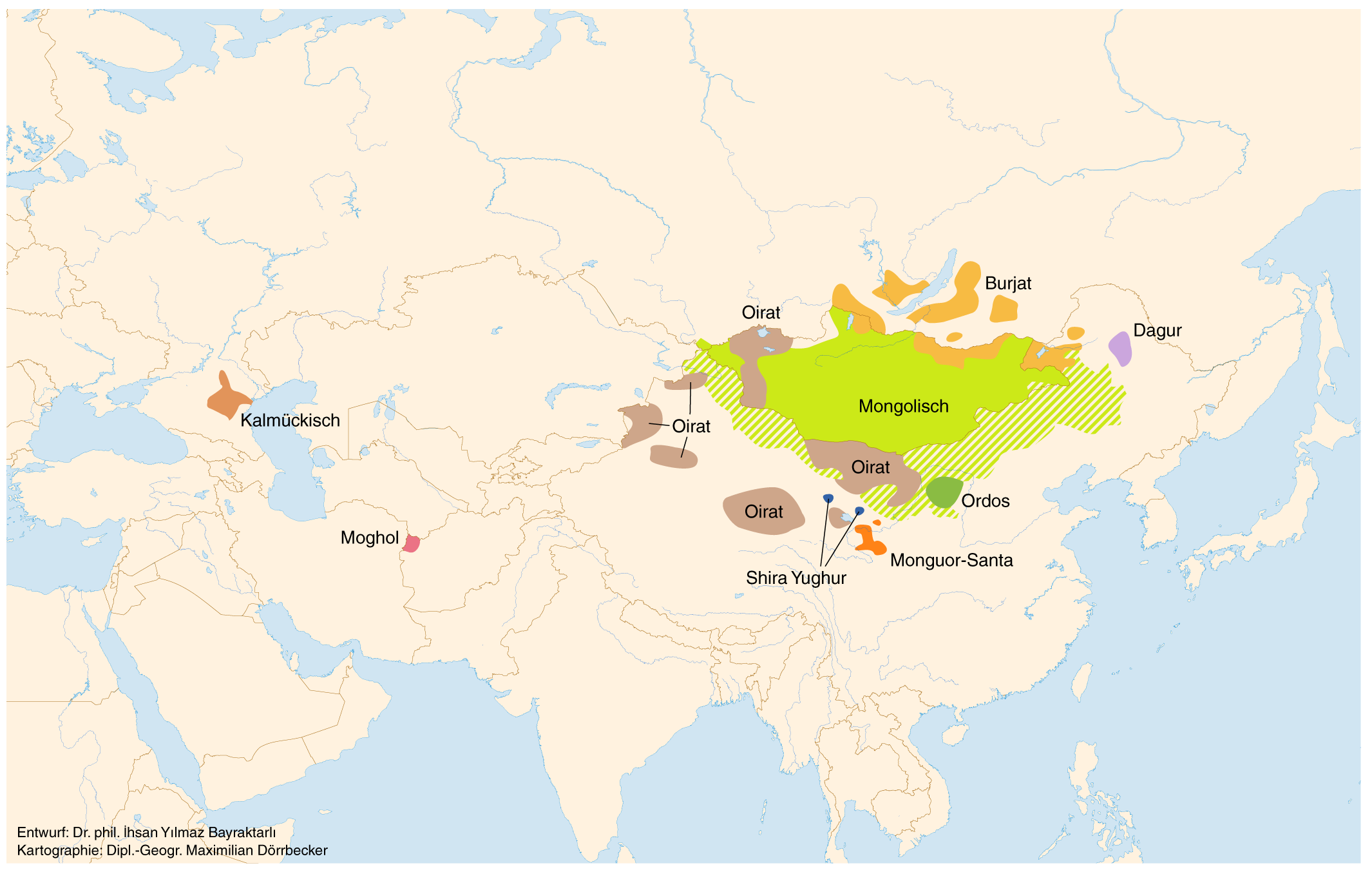Mongolic languages
Mongolic languages form one of the major language families of Central and Northeast Asia. They are considered either one of the three subfamilies of the Altaic family (with Tungusic and Turkic languages) or members of Altaic Sprachbund (for overviews, see Georg et al. 1999; Schönig 2003; Vovin 2009).
Geographically, most of the Mongolic languages are closely linked with each other (with the exception of Moghol in Afghanistan and Kalmyk in the Caspian region). They present parts of a belt that stretches from Manchuria in the east (Dagur, Khamnigan Mongol, Eastern Buryat), through Buryatia, Mongolia and Eastern Turkestan (Western Buryat, Mongol proper, Ordos, Oirat). Some peripheral languages of the Gansu-Qinghai complex (Shira Yughur, Mongghul, Mangghuer, Bonan, and Santa) are linked with the main belt through Shira Yughur and Qinghai Oirat (cf. Rybatzki, 2003: 364).
Mongolic languages have a long literary tradition that goes back to the 13th century, when the written Mongolian script (known as the ‘Old Script’, an adaption of the Semitic script used by the Ancient Uighur) was used by speakers of Mongol proper as the principal literary vehicle (Janhunen 2003:30-31).

